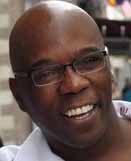The Black Benefactors is a social investment club comprised of individual members, local businesses and organizations that are dedicated to addressing the societal ills facing the African American community. Also known as a giving circle, member donations are pooled with the donations of other members to significantly contribute to the causes we care about.
The Black Benefactors will provide grants to organizations serving African American children, youth and families in the Washington, D.C. metropolitan area.
The Black Benefactors will provide grants to organizations serving African American children, youth and families in the Washington, D.C. metropolitan area.
Our goals are to:
- Educate members about the benefits of collective philanthropy
- Increase awareness of local needs
- Create a legacy of giving among African Americans as an effective vehicle for social impact and change
- Enhance the well-being of African American children, youth and families in the Washington, D.C. metropolitan area
Source: http://www.blackbenefactors.org




